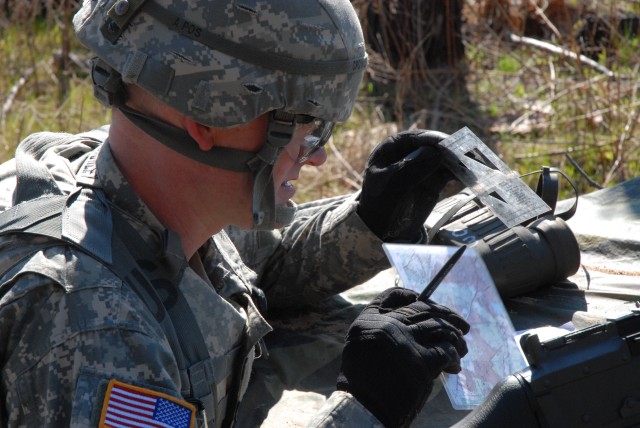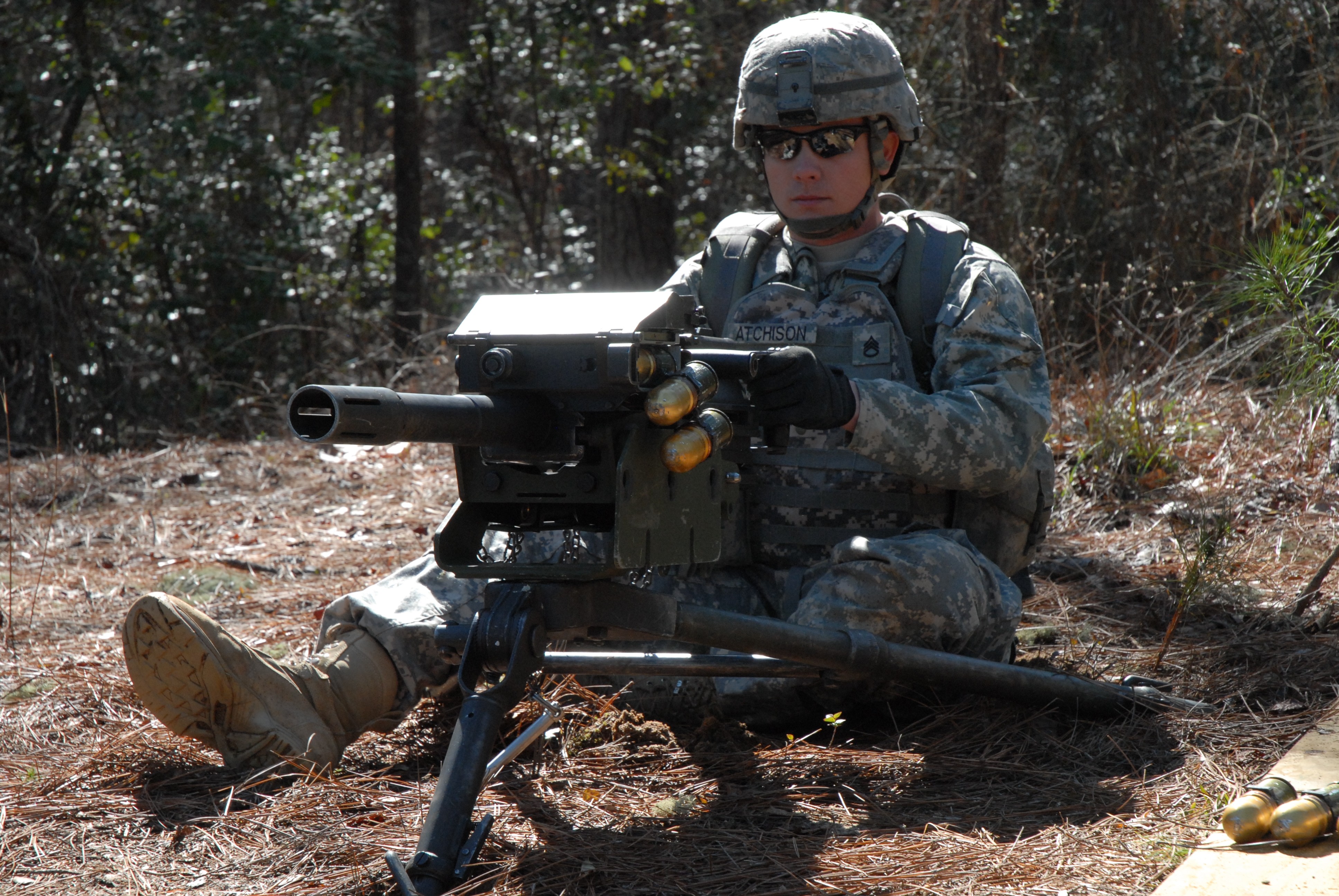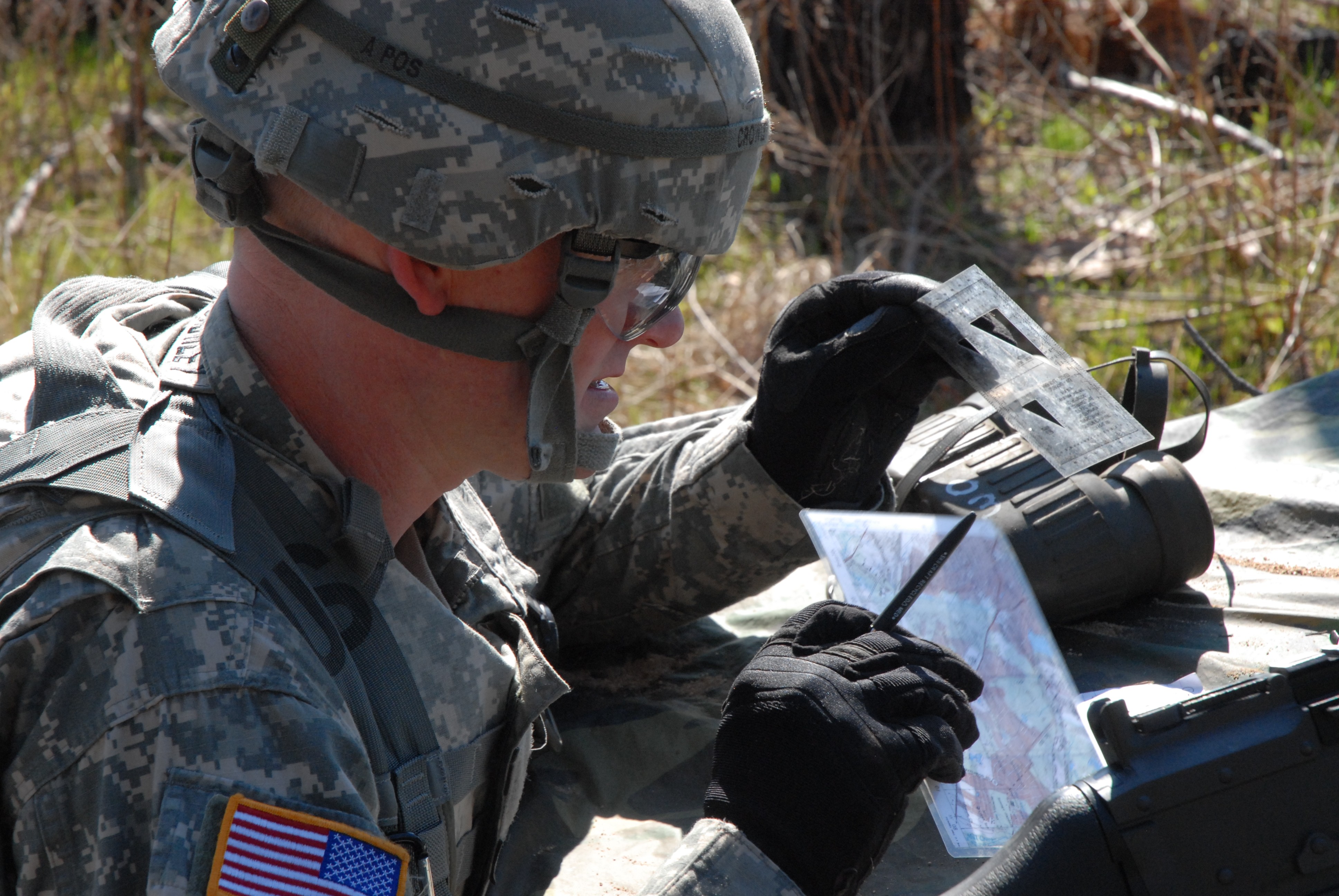FORT JACKSON, SC -- The Expert Infantryman Badge is worn by few but desired by many.
This week nearly 150 Fort Jackson Soldiers sought to earn the coveted blue and silver badge. But before they made it to the starting line, nearly 40 Soldiers had already been knocked out of the race to glory.
For this year's EIB competition, competitors were required to prequalify as experts at both day and night basic rifle marksmanship, which proved too daunting for some.
By the end of the first day of testing Monday, the Army Physical Fitness Test and land and night navigation had eliminated another 32 Soldiers.
Tuesday morning, the remaining 58 warriors donned their full battle rattle to engage fictitious enemy combatants in mock skirmishes. Until late this afternoon, the Soldiers will continue to negotiate through scenario-based combat lanes designed to test their abilities in realistic wartime situations.
"We've got three different scenarios that the Soldiers will go through in three different lanes that they're pretty much going to (encounter) if they go to Iraq or Afghanistan," said Sgt. Maj. Michael Love, post EIB NCOIC.
Love is referring to the three newly added components to this year's competition - an urban lane, a patrol lane, and a traffic control point lane - all of which require Soldiers to simulate engaging in events that commonly occur downrange.
And contrary to competitions of the past, grading for this year's EIB testing is driven by outcome-based standards. It's the first time since Love received his EIB in 1984 that the Soldiers don't have to complete each individual task under an extremely rigid time constraint, he said.
"Most of the tasks I had to go through were not combat situations," Love said. "It was somebody standing on the other side of the table with a stop watch saying these are the tasks, conditions and standards, and here's the start time. Go. Stop. Here's a go or no-go."
This year, he said, the Soldiers are given 20 minutes to complete 15 tasks deemed core by the Army Infantry School at Fort Benning and another 15 tasks chosen by Fort Jackson leadership.
"That's an entire 20 minutes to complete the lane from beginning to end," Love said.
"I like this better than when I went through," he said. "I think the Soldier leaves the combat lanes with a little bit more knowledge of what they can actually do under similar circumstances."
Staff Sgt. Clint Atchison, of Company D, 2nd Battalion, 60th Infantry Regiment, said he also favors the new testing.
"In the old testing, ... you would have very minimal time to load weapons systems. You would get very nervous about it and start stumbling around,"Aca,!E+Atchison said. "You'd be worried about the next task and it would mess you up. Now you actually get to take your time and do the training," he said.
Atchison, who, while deployed to Afghanistan and Iraq, has experienced some real life combat, said he feels confident his experiences and training will push him through to the final round of the competition, a 12-mile road march, which begins at 4 a.m. tomorrow.
He expects to march the grueling trek to Hilton Field, where he and the remaining infantrymen will receive their badges and join an elite band of brothers.






Social Sharing